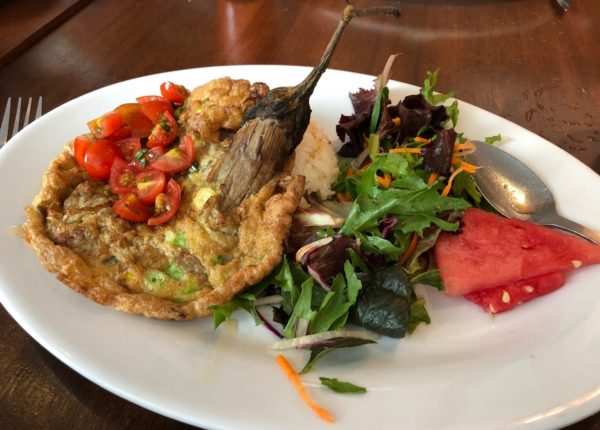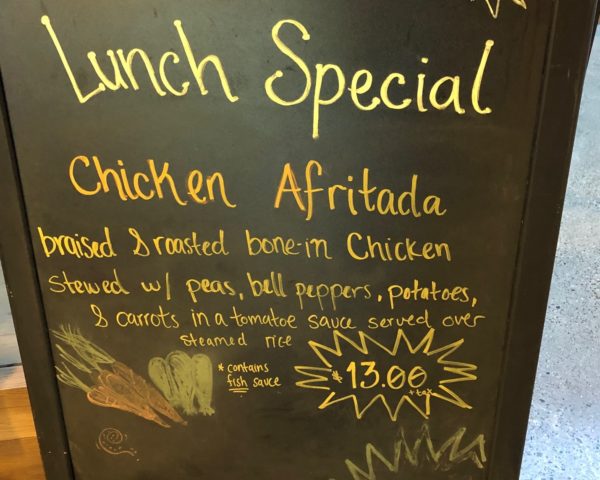Over the years I have seen a number of articles saying that Filipino food has arrived. Seeing so many for so long brings up some questions. What does “arrived” mean? For whom? Does that mean it has become as common or mainstream as Chinese or Thai food? To me, “mainstream” would require me to see for myself the following three conditions:
- Numbers of restaurants and/or food trucks with some reasonable amount of non-Filipino customers in significant numbers (greater than one third)
- Filipino restaurants thriving for a significant amount of time (time scale is years)
- Filipino restaurants making it in non-Filipino dominated areas (e.g. not in Daly City, Hercules, or Milpitas)
Some recent experiences has led me to make a conclusion about this question.
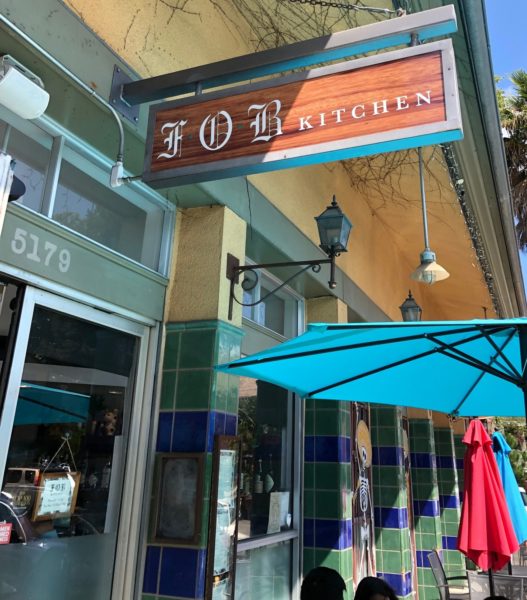 My niece invited the Wife and me for brunch at FOB Kitchen in the Temescal neighborhood of Oakland California for a birthday celebration. Starting as a San Francisco popup in 2015, FOB Kitchen has settled into a permanent space in Oakland. We were not the only Filipinos there, but the majority of the other patrons were not Filipino. A group of middle-aged white women were eyeing our food curiously, perhaps wondering what is that “authentic” food we Filipinos are ordering. Interestingly enough, most of the waiters were not Filipino.
My niece invited the Wife and me for brunch at FOB Kitchen in the Temescal neighborhood of Oakland California for a birthday celebration. Starting as a San Francisco popup in 2015, FOB Kitchen has settled into a permanent space in Oakland. We were not the only Filipinos there, but the majority of the other patrons were not Filipino. A group of middle-aged white women were eyeing our food curiously, perhaps wondering what is that “authentic” food we Filipinos are ordering. Interestingly enough, most of the waiters were not Filipino.
The food was generally close to what I would expect Filipino food to be, with the presentation being more American in style. You can see that from the above picture of the Tortang Talong that I ordered. The Sinigang wasn’t what I expected – it didn’t have enough of that sourness that I was looking for. Still, overall, I was very pleased. I was also learned that Fob Kitchen wasn’t the only choice for my niece and her family – Likha was not that far, being in Emeryville.
Later that month, my family was traveling south from San Francisco after a weekend getaway, and we were hungry. Number One Son had a hankering for Filipino food – he would soon be back to college in Boston and knew that this would be his last chance for a while. We originally aimed for Nicks on Grand, a Vegan Filipino restaurant (yes such things exist), but it was closed for some reason. We ended up going to Chibog (Tagalog slang for “let’s eat”), a more or less typical Filipino restaurant in the heavily Filipino city of Daly City. What surprised me was the number of non-Filipinos there – including non-Filipino Asians as well as white and black people. A much different experience from thirty years ago, when I was eating at old school Daly City restaurants like Tito Rey.
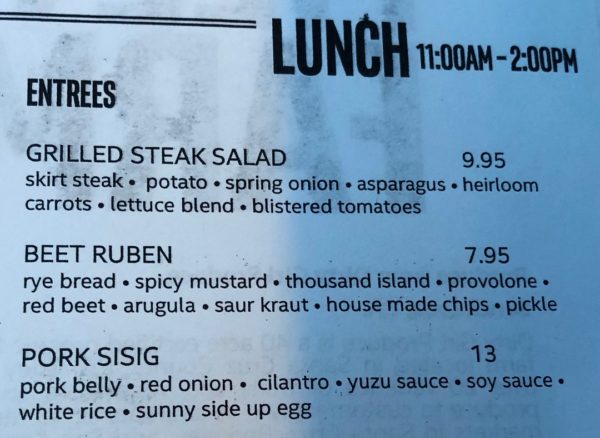 I work in Silicon Valley, and the family wanted to check out the sit-down restaurant at work. They visited me at lunch so we could share a meal together there. One thing that struck our eye on the menu was the item of Adobo with Garlic Fried Rice. I would return to the restaurant a few months later and see “pork sisig” on the menu and the lunch of special of “Chicken Afritada.” I later talked to the chef, who is Filipino. He says that he likes to put one Filipino item on the menu every quarter, and he said that his Arroz Caldo was a big hit last winter.
I work in Silicon Valley, and the family wanted to check out the sit-down restaurant at work. They visited me at lunch so we could share a meal together there. One thing that struck our eye on the menu was the item of Adobo with Garlic Fried Rice. I would return to the restaurant a few months later and see “pork sisig” on the menu and the lunch of special of “Chicken Afritada.” I later talked to the chef, who is Filipino. He says that he likes to put one Filipino item on the menu every quarter, and he said that his Arroz Caldo was a big hit last winter.
If Filipino food items penetrating the menu of a corporate restaurant wasn’t sign enough of Filipino food becoming increasingly visible, while walking in Valley Fair mall a few weeks ago, I looked at the new softserve ice cream place, SomiSomi, that had just opened. One of the flavors there was ube! For those who don’t know, Ube is a purple yam used in Filipino food. The broader use of it seems to be popping up in all kinds of places other than Filipino homes and restaurants. The Lumpia Company, another Filipino restaurant in Oakland, is backed financially by E-40, my favorite Bay Area rapper and the only rapper I know who can work Gouda cheese into a lyric. He grew up in Vallejo, a heavily Filipino town in the Bay Area, and he says that Lumpia is one of his favorite foods.
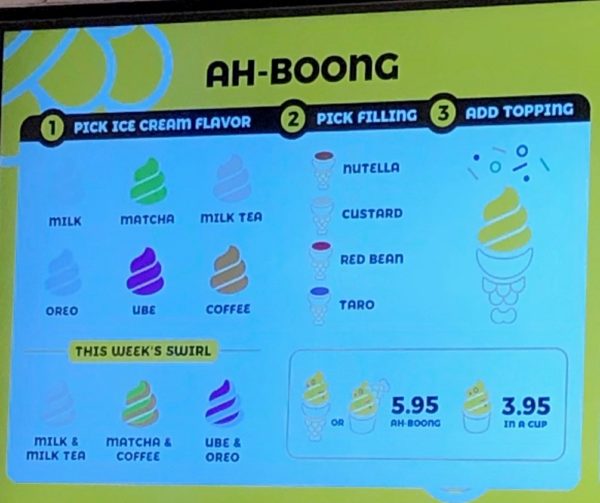 So how did Filipino fare do regarding my three criteria? For the first one, I saw lots of non-Filipino patrons of Filipino food and flavors – would seem to be fulfilled for major metropolitan areas at least. The movie Ulam: Main Dish talks about Filipino restaurants from New York to Los Angeles and shows Filipino restaurants full of non-Filipino patrons. Regarding my second criteria, some of the featured restaurants in the movie like Jeepney and Maharlika have been around for more than a few years now, with Maharlika emerging more than 8 years ago. As to the third criteria, many of these restaurants are not in heavily Filipino areas.
So how did Filipino fare do regarding my three criteria? For the first one, I saw lots of non-Filipino patrons of Filipino food and flavors – would seem to be fulfilled for major metropolitan areas at least. The movie Ulam: Main Dish talks about Filipino restaurants from New York to Los Angeles and shows Filipino restaurants full of non-Filipino patrons. Regarding my second criteria, some of the featured restaurants in the movie like Jeepney and Maharlika have been around for more than a few years now, with Maharlika emerging more than 8 years ago. As to the third criteria, many of these restaurants are not in heavily Filipino areas.
So has Filipino food made the mainstream? I’d answer that with a qualified yes. Compared to when I was growing up when there were no Filipino food restaurant I could remember, it definitely has. Back then, my parents had to travel half an hour to Oakland Chinatown to get Filipino ingredients. Now, food like Tortang Talong, Arroz Caldo, and Sinigang have their own Wikipedia entries. In major metropolitan areas like the Bay Area, LA, and New York, more and more non-Filipinos are becoming familiar and patronizing Filipino restaurants. As I noted earlier, Filipino food has expanded to accommodate even Vegan tastes, with Nick’s being around for a few years and recently added a San Francisco location.
While we have been talking mainly about sit down restaurants, Filipino fast food chain Jollibee has 37 stores in the US, with plans to have 150 in four years. Locally here in the Bay Area, food trucks like Senor Sisig are quite popular, and I remember when my sons were still in high school, we would get food from Senor Sisig after cross country meets. Number Two Son said that his very white friend from Vermont went with him to The Presidio Off the Grid and got lumpia from the Jeepney Guy food truck. Before that, she had no idea what lumpia is.
Why a qualified yes? I don’t have a feel for how widespread Filipino restaurants are outside of major metropolitan areas. Even in the big metro areas, while there are a lot of more of them now, one really couldn’t call them common. Still, the availability of Filipino food is vastly greater than I was growing up, and even better than four or five years ago. With flavors like Filipino flavors like Ube becoming popular and Filipino dishes making it onto Silicon Valley corporate menus, I’d say that Filipino food, while not yet ubiquitous, has definitely arrived.
- Excited
- Fascinated
- Amused
- Disgusted
- Sad
- Angry

